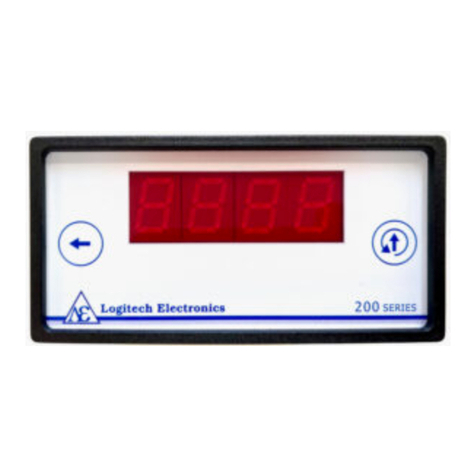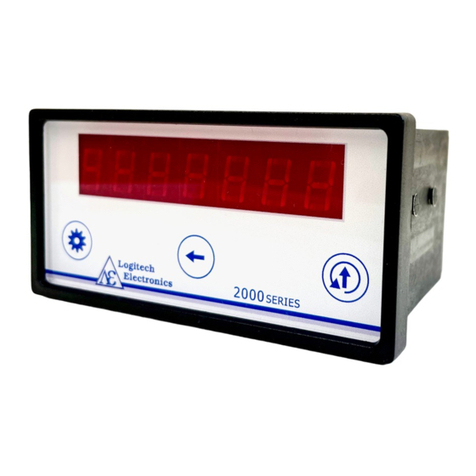
___________________________________________________________________________________________________________________________________________________________________________________________________
Logitrace_hb-uk.doc v2.0 9
Selecting the Datum
The spindle or centre of the turntable is the Datum for the majority of measurements.
However, some applications require that one section or part of the component is to be
used as the datum or reference point for another nominally concentric section or part.
To carry out this measurement, you must first trace the reference section in the normal
manner. Ensure that you have selected the appropriate level of magnification and filter
and ensure that the appropriate reference standard has been selected from the ‘View’
menu. If there are areas to be omitted then this may be carried out as described
elsewhere. You can save this trace to disc or send to the printer, as you wish. Then,
from within the Options menu, select Set Reference Axis. You will be asked
“Do you wish to use this trace as datum?”If so, click on Yes. The reference
datum is now set for use by a subsequent trace.
Carefully move the stylus to the section of interest. Beware if the mechanics is moved
in any way, the measurement will not be valid. Take the measurement in the normal
manner but avoid making changes to any of the settings. If you find that the pointer
moves off the range, you will need to repeat the datum measurement on a lower
magnification setting, or repeat after re-centring the component.
After completing the trace the results will be
shown, as usual, referenced to the Spindle.
However, a previously greyed out menu
item is now available. If you open the View
menu, you will now be able to select Datum:
Reference Axis. The display will change,
when this item is selected, to show results
referenced to the previously defined
reference axis. A special symbol of a circle
overlaid with a cross indicates the position
of the reference axis in relation to the centre
of the reference standard circle, which is
always positioned at the centre of the chart.
This method requires that the component is perfectly aligned to the axis of measurement
i.e. square to the table. On some components, it is difficult or even impossible to
achieve. In this situation, you can trace two sections of the component and the axis
between the centres of these traces can be set as the reference axis. To do this; measure
the first reference section as previously described and, from the Options menu, select
Set Reference Axis. Then move to the second section and take a trace. Now select
Set Upper Axis from the Options menu. You will be asked to enter a Reference
Height. This is the distance (in mm.) between the first reference section and this
second reference. Now move to the position of interest on the component and take the
measurement trace. As previously described, the result will appear on the screen with
the spindle as reference. Open the View menu and select Datum: Reference Axis. A
new dialog will appear asking you to enter the measurement height. This is the distance
(in mm.) from the first reference axis. If you want to change the value entered at a later
stage, you can use the Options menu and select Enter Measurement Height.





























